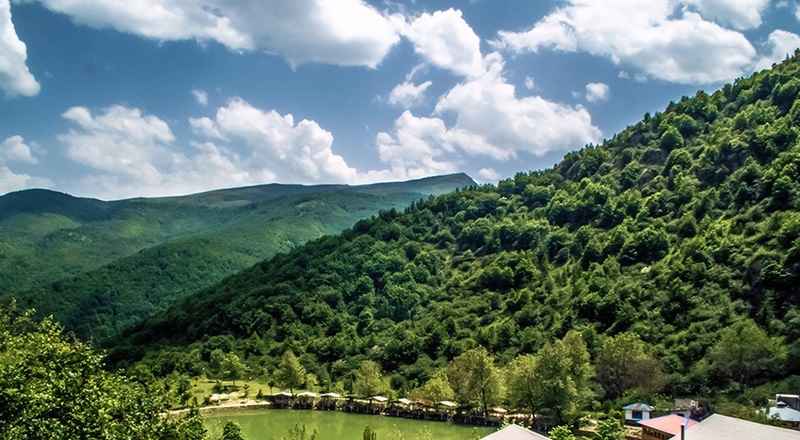Ramsar
A city in the Mazandaran province, located on the Caspian Sea coast, known as Sakhtsar in the past. The Ramsar natives are Guilakíes (from Guilán province), although there are also Mazandaraní among them.
Ramsar is a popular seaside resort for Iranian tourists also offering attractions such as: hot springs, the lush green forests of the Alborz Mountains, the Pahlaví Holiday Palace and the Ramsar Hotel. 27 kilometers south of Ramsar and 2,700 meters above sea level in the Alborz Mountains is the village of Javaher Deh, which is an important viewpoint of the Ramsar area.
Recognition of “wetlands of international importance” in the Environmental Code (Art. L, 336-2)
The Ramsar Convention – international treaty approved in 1971 and which entered into force in 1975: “wetlands” are areas of marshes, swamps, bogs or waters, both natural and artificial, permanent or temporary, where the water is stagnant or flowing, fresh, brackish or saline, including bodies of sea water whose depth at low tide does not exceed 6 meters.
In accordance with article 2 of the Convention on Wetlands of International Importance Especially as Habitat for Waterfowl, signed at Ramsar on February 2, 1971, it was proposed to include in the list of wetlands of ecological, botanical, zoological, importance. limnological or hydrological international. The sites listed in this way are managed in such a way as to promote their conservation and rational use.
Thermal waters
It is a complex made up of a series of gaseous and sulphurous springs located in areas such as Javaher Deh, Kotalum and Sa’dat Mahaleh. In recent years new facilities have been built to meet the needs of visitors and residents of the city.
Ramsar garden
The Ramsar Historic Garden and related structures are nationally registered and supported by the Cultural Heritage Organization of Iran. The garden covers an area of 60,000 m and is one of the most beautiful and traditional gardens in Mazandarán Province and Iran. The interior is a rectangular building with a central hall, rooms and a porch with stone columns. The architectural design shows the trace of the kingdom of Pahlaví I, with his works of marble, plaster and mirror.
Deylaman Mountains
These are the mountains that are located on the east-west axis of the country and form the natural borders of the Guilán and Mazandarán provinces. The Cheshm Chal is one of the peaks in this region, rising more than 4,000m above sea level and covered in permanent snow and glaciers. On the north slope is the Eich waterfall.
If you are passionate about mountains, mountaineering, hiking, cycling, anthropology, historical landscapes and the fascinating culture of the Middle East, SITO Travel will help you organize your trip to Iran. Contact us because our experience is born and developed in the field.
Ramsar Boulevard
Symbol of the city of Ramsar and one of the most beautiful streets in northern Iran. The construction of the boulevard dates back to the first Pahlaví era. With a rather unique design, the boulevard is one of the few streets on Iran’s national heritage list, today known as Moallem Boulevard.
Javaher Deh Village
The village of Javaher Deh, located 27 kilometers from Ramsar and in the rural district of Sakhtsar and the Alborz Mountains at 2000 meters above sea level, is located on the edge of the high Samasus Mountains and among pastures and herbs. The most famous mountains are: Sorkh Tale, Vazhak, Se Barareh, Rezheh. Lapa Sar with its famous therapeutic springs and Samamus and the tomb of Shah Yahya Kiayi, the upper streams of this village as well as exceptional waterfalls, the vast forest park between the valley next to the Safarud river and a river of sparkling mineral water are some of the attractions of the area.



Comments